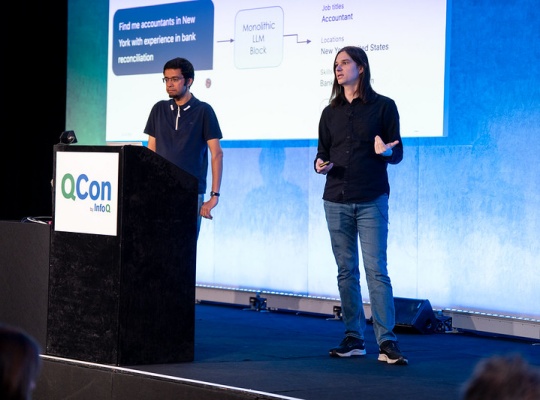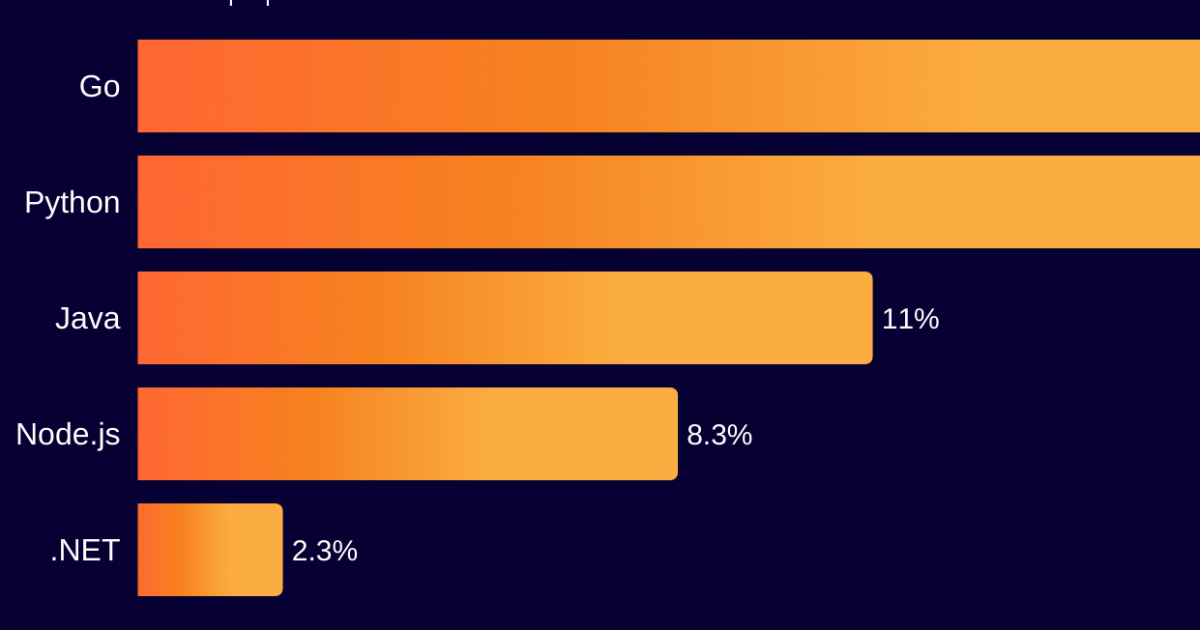Codetown
Codetown ::: a software developer's community
JSR Watch: Here’s to Progress
http://java.ulitzer.com/node/965152
JSR Watch: Here’s to Progress
And here’s to the next 10 years!
By Patrick Curran
May 15, 2009 03:00 PM EDT
Reads: 560
The end of the year is an opportunity to review the past year's activity, and to present this to our Executive Committee (EC) members, to our broader membership, and to the general public. So this month I will summarize our progress during the past year.
PMO Initiatives
First, in addition to the ongoing work of moving JSRs through the process (more on this later), the JCP engaged in a couple of new initiatives around transparency and agility.
I've addressed the transparency issue relatively recently in this column, so I won't say much more here except to remind you that we are now strongly encouraging all Expert Groups (EGs) to work in an open and transparent manner by adopting practices such as the use of public mailing lists and issue-tracking mechanisms. Of course, it would be hypocritical for us to encourage this behavior in EGs while continuing to hold Executive Committee (EC) meetings in private, so there too we are becoming more open. Starting in September 2008 the ECs agreed to make full minutes and meeting materials accessible to the general public rather than simply posting summaries that only JCP members could read. (We reserve the right to go into Private Session from time to time when sensitive matters are discussed, but we don't expect to do this very often.) If you want to see what we're up to, the meeting materials are accessible.
As for agility, when I reviewed 2007 activity this time last year it became apparent that the amount of time it takes Expert Groups to complete their work varies significantly. Some manage to finish in a little more than a year, while others take several years. Also, we know that there are some JSRs that are effectively stalled and really ought to be withdrawn. As a first step to encourage agility we decided to introduce a new category for JSRs that have made no progress for 18 months - these will be labeled as "Inactive" on jcp.org. The PMO will work with the Spec Leads of these JSRs to encourage them to pick up the pace. If it becomes clear that the JSR is unlikely to complete, we will encourage them to withdraw it. In addition, we plan to review all JSRs that reach completion, and others as appropriate, to identify and publicize the good (and bad) practices that affect the speed with which JSRs move through the process.
Both of these subjects were discussed at the December EC meeting. Thanks to our new "open and transparent" policy, you can review the presentation that formed the basis for that discussion here.
Membership
Our membership grew slightly (by 3%) in 2008 to a total of 1,465. About three quarters of these are individual members, while most of the others are corporations, with a small number of non-profit organizations (open source foundations, universities, etc.). Half our members are based in the U.S., one-third in Europe and the Russian Federation, and most of the rest are based in Asia and the Middle East, with 4% in South America. Since individual membership is free and never needs to be renewed, it's likely that some of these members are "inactive" (not having told us that they've moved on), but the turnout in our annual elections (around 30%) shows a reasonably healthy participation rate. Speaking of free membership, we are currently waiving membership fees for Java User Groups who wish to join the organization (several are in the process of doing so). Visit our site for further information.
JSR Activity
In line with the new definition of "Inactive JSRs" (those that made no formal progress through the system during the past 18 months), we collected data on JSRs that made progress during the past 18 months rather than during the calendar year 2008. By this definition we currently have 70 Active JSRs. During this period six new JSRs were started (two others were proposed but failed to win approval), 16 JSRs completed, and 13 issued Maintenance Releases. An additional 38 made other progress through the system, mostly publishing Early Drafts, Public Review Drafts, or Proposed Final Drafts.
Of the 70 Active JSRs, 27 targeted Java ME, 20 were aimed at Java SE, 15 were for Java EE, and 8 intended to support both Java SE and Java EE.
The new JSRs were JSR 320: Services Framework (AT&T); JSR 321: Trusted Computing API for Java ( IAIK Graz University of Technology); JSR 322: Java EE Connector Architecture 1.6 (Sun); JSR 325: IMS Communication Enablers (ICE) (Ericsson AB); JSR 326, Post mortem JVM Diagnostics API (IBM); and JSR 327: Dynamic Contents Delivery Service API for Java ME (SK Telecom).
The JSRs completed in calendar year 2008 were JSR 272: Mobile Broadcast Service API for Handheld Terminals (Nokia/Motorola); JSR 293: Location API 2.0 (Nokia); JSR 298: Telematics API for Java ME (SK Telecom); JSR 311: JAX-RS: The Java API for RESTful Web Services (Sun); JSR 289: SIP Servlet v1.1 (Oracle), JSR 240: JAIN SLEE v1.1 (OpenCloud); JSR 281: IMS Services API (Ericsson AB); JSR 258: Mobile User Interface Customization API (Nokia); JSR 286: Portlet Specification 2.0 (IBM); and JSR 254: OSS Discovery API (Nakina Systems).
A further six JSRs completed in the second half of 2007: JSR 190: Event Tracking API for J2ME (Amdocs Management); JSR 196: Java Authentication Service Provider Interface for Containers (Sun); JSR 263: Fault Management API (HP); JSR 264: Order Management API (Codecentric); JSR 280: XML API for Java ME (Sun, Nokia); and JSR 291: Dynamic Component Support for Java SE (IBM).
The time it took these JSRs to work their way through the process varied from a little over one year for JSR 291 to five years for JSR 190. There are obviously lessons to be learned about how to - and how not to - complete JSRs quickly, and we will investigate further over the coming months.
Spec Leadership and Expert Group Participation
Twenty-two organizations and three individuals played a Spec Lead role on the 70 active JSRs. Sun was the most active, occupying 27 Spec Lead positions, followed by Nokia (11), Oracle (8), Motorola (5), and IBM (4).
Another measure of involvement is participation in Expert Groups. More than 1,200 members served on the EGs of active JSRs (an average of about 17 per group). Two-hundred twenty-one different organizations contributed EG members, together with 245 individuals. Once again, Sun was in the lead with 92 Expert Group members. Oracle (after absorbing BEA) contributed about 75, followed by IBM (54), Motorola (42), Nokia (39), Red Hat (27), Ericsson (24), SAP (24), and Samsung (23) - to list only those companies that contributed 20 or more.
These numbers make it clear that no matter how important we believe individual members are (and I do strongly believe they are important, and appreciate their involvement), the JCP's work could not be accomplished without the active participation of our large corporate members.
Happy Birthday, JCP
Finally, 2008 was a special year for the JCP, since the organization turned 10 years old in December. We celebrated the event in January with a party at the Computer History Museum in Mountain View, to which we invited JCP program participants - Executive Committee members, Spec Leads, and Expert Group members - as well as Sun executives, members of several local Java User Groups, and others who have been influential in the development of Java over the past 10 years. You can see a slide show of photographs from this event.
I'll finish this column as I finished my brief welcome speech at the birthday party, by noting that Java would not be where it is today - with millions of developers, and running on billions of devices - without the JCP. By working collaboratively to develop Java technologies, we grow the market for everybody. Happy birthday to the JCP and here's to the next ten years!
Tags:
Replies to This Discussion
Notes
Welcome to Codetown!
 Codetown is a social network. It's got blogs, forums, groups, personal pages and more! You might think of Codetown as a funky camper van with lots of compartments for your stuff and a great multimedia system, too! Best of all, Codetown has room for all of your friends.
Codetown is a social network. It's got blogs, forums, groups, personal pages and more! You might think of Codetown as a funky camper van with lots of compartments for your stuff and a great multimedia system, too! Best of all, Codetown has room for all of your friends.
Created by Michael Levin Dec 18, 2008 at 6:56pm. Last updated by Michael Levin May 4, 2018.
Looking for Jobs or Staff?
Check out the Codetown Jobs group.
InfoQ Reading List
API Platform Unkey Ditches Serverless After Performance Struggles

Developer Platform Unkey has written about rebuilding its entire API authentication service from the ground up, moving from serverless Cloudflare Workers to stateful Go servers after re-evaluating the constraints of their serverless architecture. The move resulted in a sixfold performance improvement and eliminated the workarounds that had become a dominant part of its engineering efforts.
By Matt SaundersPresentation: Lessons Learned From Building LinkedIn’s First Agent: Hiring Assistant

Karthik Ramgopal and Daniel Hewlett discuss the evolution of AI at LinkedIn, from simple prompt chains to a sophisticated distributed agent platform. They explain the transition to a supervisor-sub-agent model that enables parallel development and modular quality evaluation. and share a blueprint for building resilient, high-scale agentic systems.
By Karthik Ramgopal, Daniel HewlettKubernetes 1.35 Released with In-Place Pod Resize and AI-Optimized Scheduling

The Cloud Native Computing Foundation (CNCF) announced the release of Kubernetes 1.35, named "Timbernetes", emphasizing its focus on mutability and the optimization of high-performance AI/ML workloads.
By Mostafa RadwanReScript 12.0 Released with New Build System

ReScript 12.0 has launched, marking a milestone in modernizing the language with a rewritten build system, improved performance, and enhanced syntax. Key features include modular architecture, dictionary literals, and JSX preserve mode, reinforcing its position as a strong alternative to TypeScript for developers seeking sound typing and rapid compilation. Join the evolution today!
By Daniel CurtisCloudflare Year in Review: AI Bots Crawl Aggressively, Post-Quantum Encryption Hits 50%, Go Doubles

Cloudflare has recently published the sixth edition of its Radar Year in Review. The results reveal 19% yearly growth in global internet traffic, Googlebot dominance, increasing crawl-to-refer ratios, and broad adoption of post-quantum encryption. Over 20% of automated API requests were made by Go-based clients, almost doubling adoption over the previous year.
By Renato Losio
© 2025 Created by Michael Levin.
Powered by
![]()